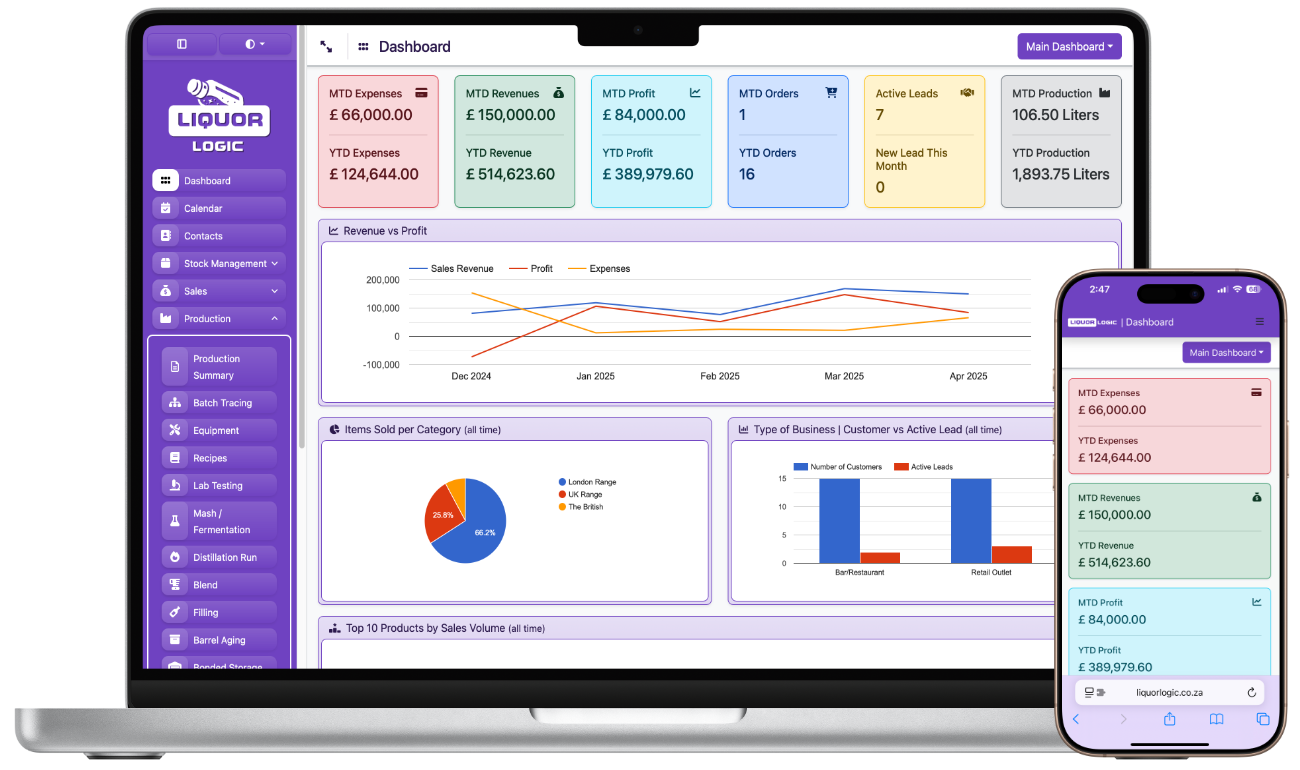Crafting Exceptional Alcohol Recipes: How Technology Drives Innovation

A detailed exploration of how integrated software helps alcohol producers innovate while maintaining consistency and efficiency across multiple production stages.
Crafting Exceptional Alcohol Recipes: How Technology Drives Innovation
Creating wines, spirits, beers, and ciders that consistently delight consumers is a complex blend of art and science. Producers must carefully balance ingredient ratios, fermentation schedules, aging processes, and flavor profiles. With growing demand for unique flavors and small-batch experimentation, managing recipes and production efficiently has become critical.
The Challenge of Recipe Management in Modern Alcohol Production
Traditional recipe management methods—paper logs, spreadsheets, or basic software—are often insufficient for modern producers. Some challenges include:
- Scaling recipes accurately across different batch sizes without compromising quality.
- Tracking experimental or limited-edition batches separately from standard production.
- Maintaining precise documentation for regulatory compliance and audits.
- Coordinating production across multiple facilities or teams.
- Integrating lab test results and sensory evaluations into recipe adjustments.
How Liquor Logic Supports Recipe Innovation
Liquor Logic provides a centralized platform for recipe management, production tracking, and quality assurance. Key features include:
- Recipe storage and versioning: Keep multiple variations of a recipe, including experimental or seasonal versions, with full version control.
- Automated ingredient scaling: Calculate the required quantities for raw materials based on batch size, yield, and production method.
- Lab integration: Input lab test results for sugar content, alcohol percentage, and other critical quality parameters directly into production records.
- Experimental batch tracking: Test new flavor combinations or processes without affecting main production data.
- Cross-team collaboration: Production, lab, and management teams can access and update recipe details in real-time.
Optimizing Production Through Data-Driven Insights
Technology enables producers to make data-driven decisions that improve both efficiency and product quality:
- Monitor fermentation rates, distillation outputs, and aging progress across multiple batches simultaneously.
- Analyze historical recipe performance to fine-tune ingredient ratios and processes.
- Detect inconsistencies early, reducing the risk of off-flavors or defective batches.
- Streamline workflow by integrating recipe planning, lab results, and production logs in a single system.
- Enable predictive analytics to forecast ingredient requirements, reduce waste, and optimize production scheduling.
Case Study: Distillery Innovating With Experimental Flavors
A boutique distillery wanted to experiment with botanical infusions while maintaining consistent quality. Using Liquor Logic, the team could:
- Create multiple experimental batch records without disrupting core production data.
- Track ingredient yields, infusion times, and alcohol content accurately.
- Compare lab test results against target flavor profiles.
- Decide quickly whether a batch was suitable for commercial release or needed adjustment.
Conclusion
In today’s competitive alcohol market, recipe innovation is a key differentiator. By leveraging technology like Liquor Logic, wineries, distilleries, breweries, and cideries can streamline recipe management, ensure consistency, and confidently experiment with new flavors. This empowers producers to delight customers with high-quality, innovative products while maintaining operational efficiency and regulatory compliance.
Back